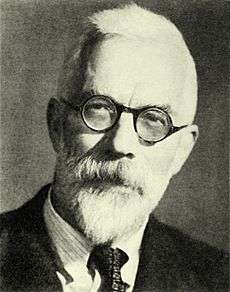Von Mises–Fisher distribution



In directional statistics, the von Mises–Fisher distribution (named after Ronald Fisher and Richard von Mises), is a
probability distribution on the -dimensional sphere in . If
the distribution reduces to the von Mises distribution on the circle.
The probability density function of the von Mises–Fisher distribution for the random p-dimensional unit vector is given by:
where and the normalization constant is equal to
where denotes the modified Bessel function of the first kind at order . If , the normalization constant reduces to
The parameters and are called the mean direction and concentration parameter, respectively. The greater the value of , the higher the concentration of the distribution around the mean direction . The distribution is unimodal for , and is uniform on the sphere for .
The von Mises–Fisher distribution for , also called the Fisher distribution, was first used to model the interaction of electric dipoles in an electric field (Mardia, 2000). Other applications are found in geology, bioinformatics, and text mining.
Estimation of parameters
A series of N independent measurements are drawn from a von Mises–Fisher distribution. Define
Then (Sra, 2011) the maximum likelihood estimates of and are given by
Thus is the solution to
A simple approximation to is
but a more accurate measure can be obtained by iterating the Newton method a few times
For N ≥ 25, the estimated spherical standard error of the sample mean direction can be computed as[1]
where
It's then possible to approximate a confidence cone about with semi-vertical angle
- where
For example, for a 95% confidence cone, and thus
See also
- Kent distribution, a related distribution on the two-dimensional unit sphere
- von Mises distribution, von Mises–Fisher distribution where p = 2, the one-dimensional unit circle
- Bivariate von Mises distribution
- Directional statistics
References
- Dhillon, I., Sra, S. (2003) "Modeling Data using Directional Distributions". Tech. rep., University of Texas, Austin.
- Fisher, RA, "Dispersion on a sphere'". (1953) Proc. Roy. Soc. London Ser. A., 217: 295–305
- Mardia, Kanti; Jupp, P. E. (1999). Directional Statistics. Wiley. ISBN 978-0-471-95333-3.
- Sra, S. (2011). "A short note on parameter approximation for von Mises-Fisher distributions: And a fast implementation of I s (x)". Computational Statistics. 27: 177–190. CiteSeerX 10.1.1.186.1887
 . doi:10.1007/s00180-011-0232-x.
. doi:10.1007/s00180-011-0232-x.